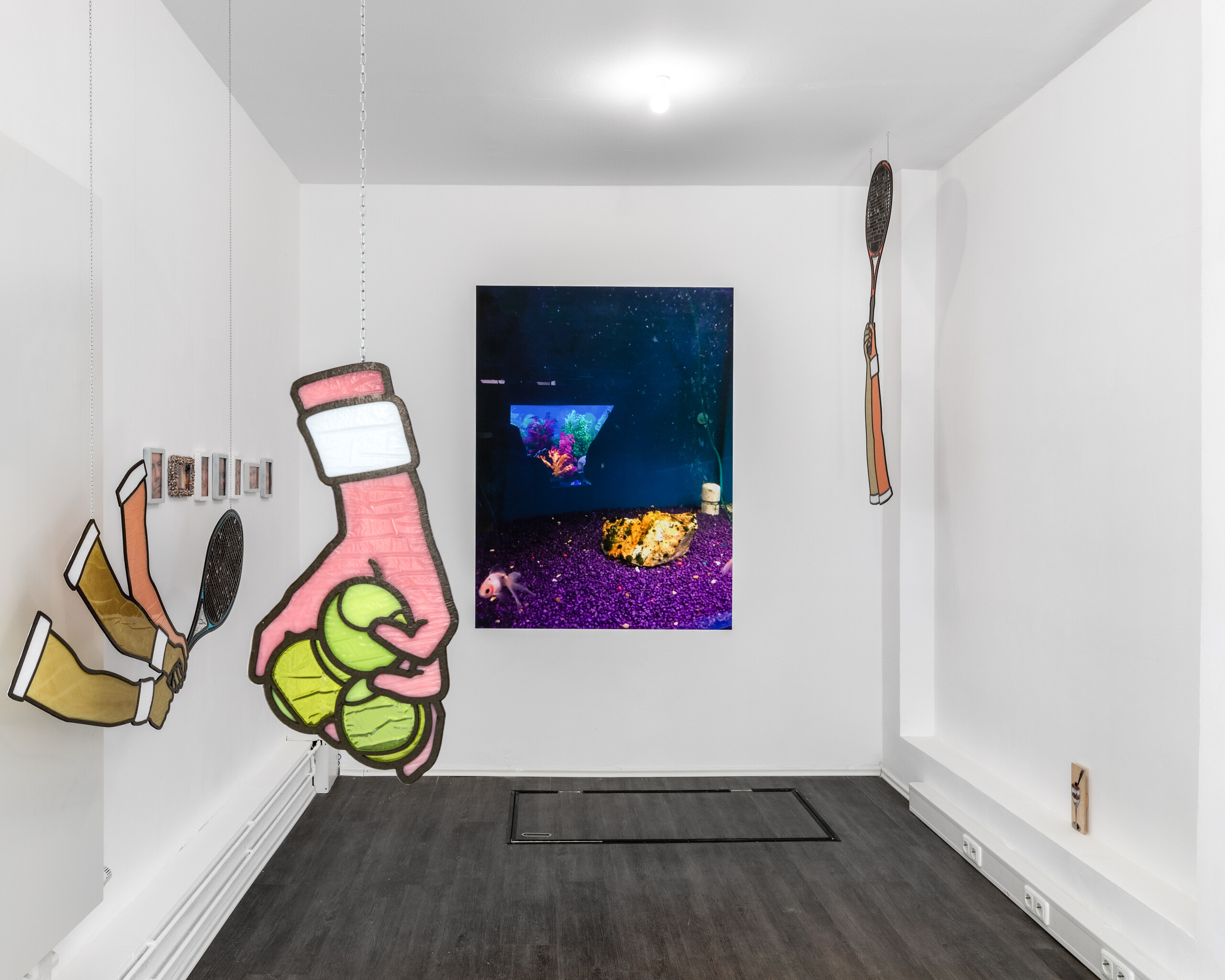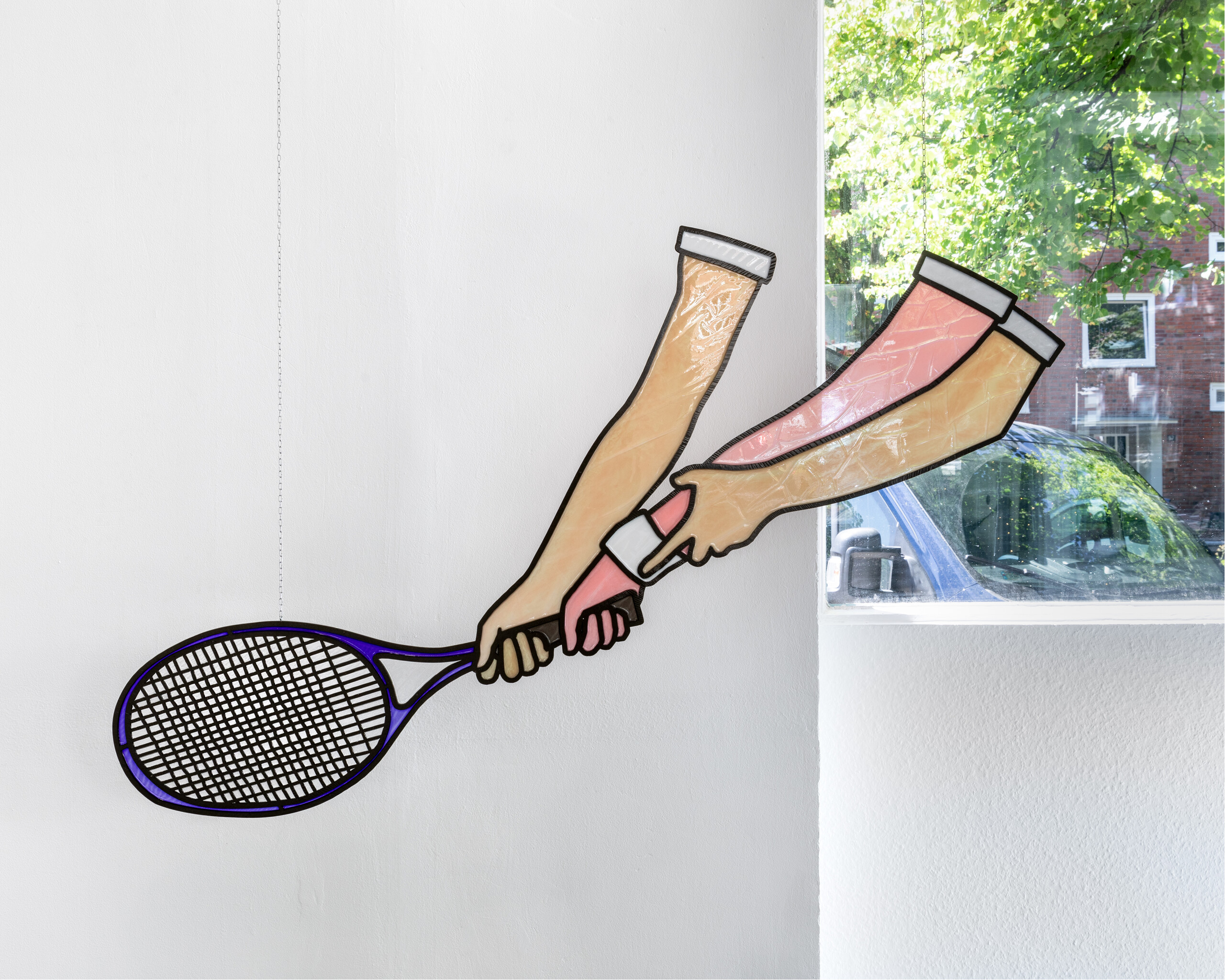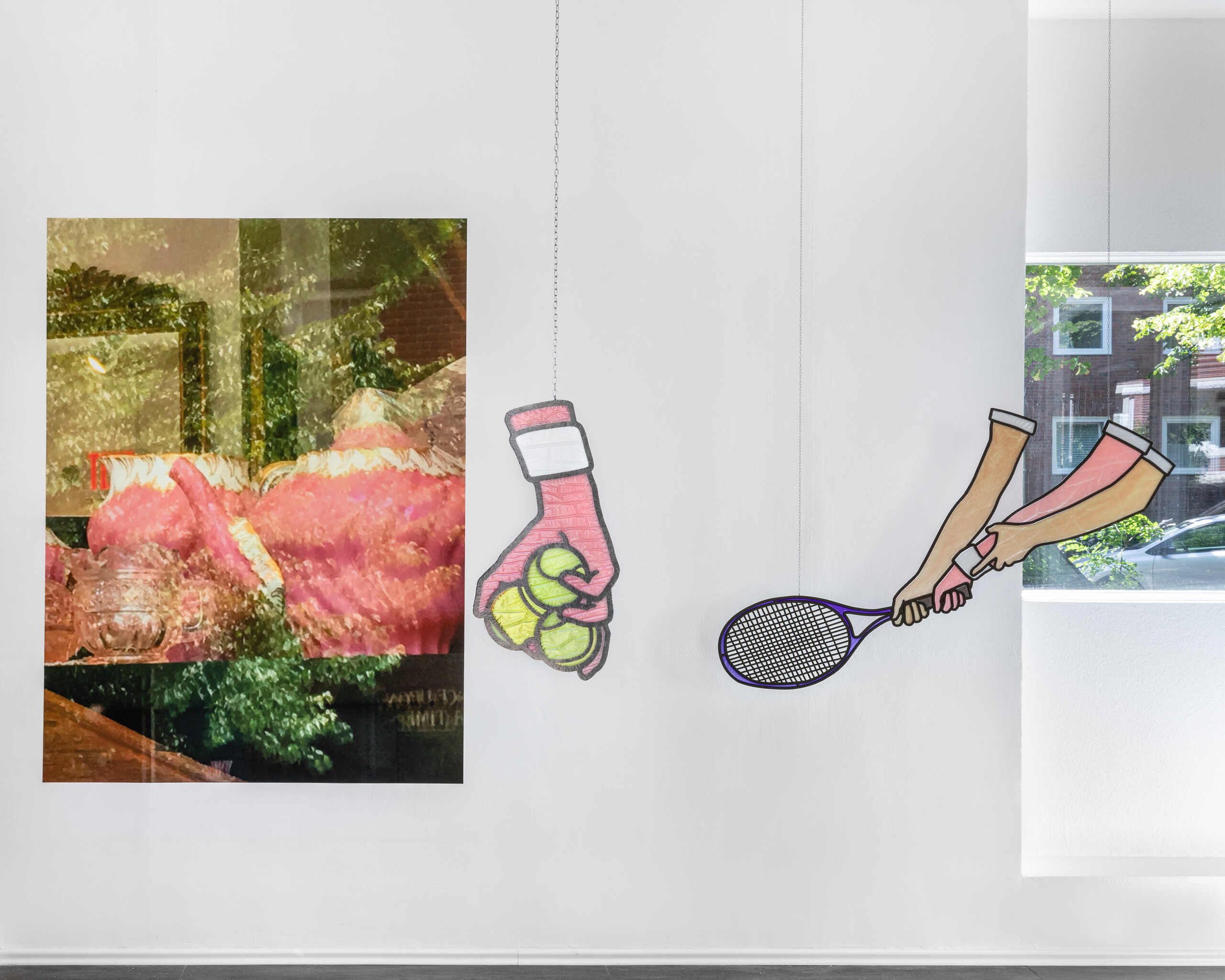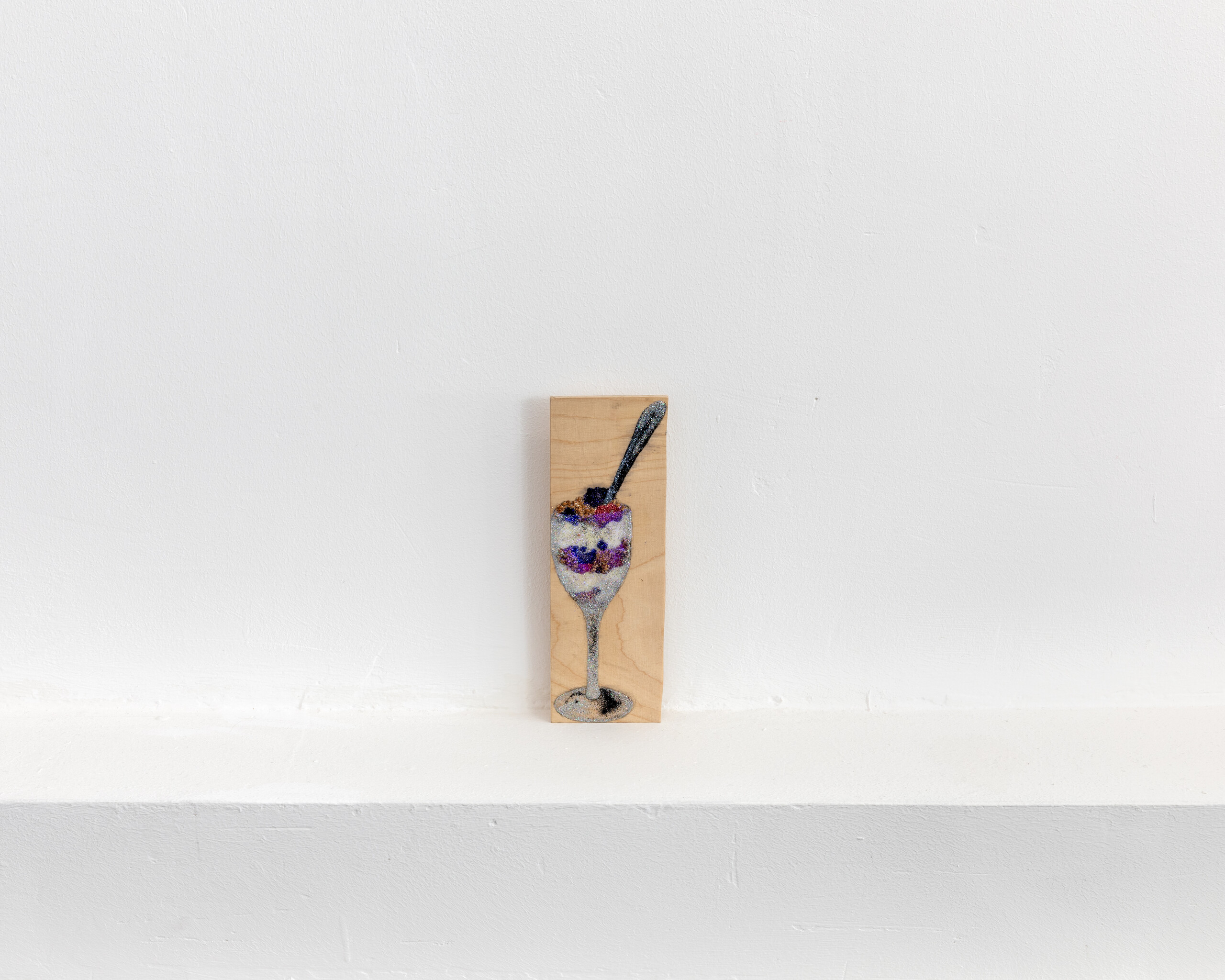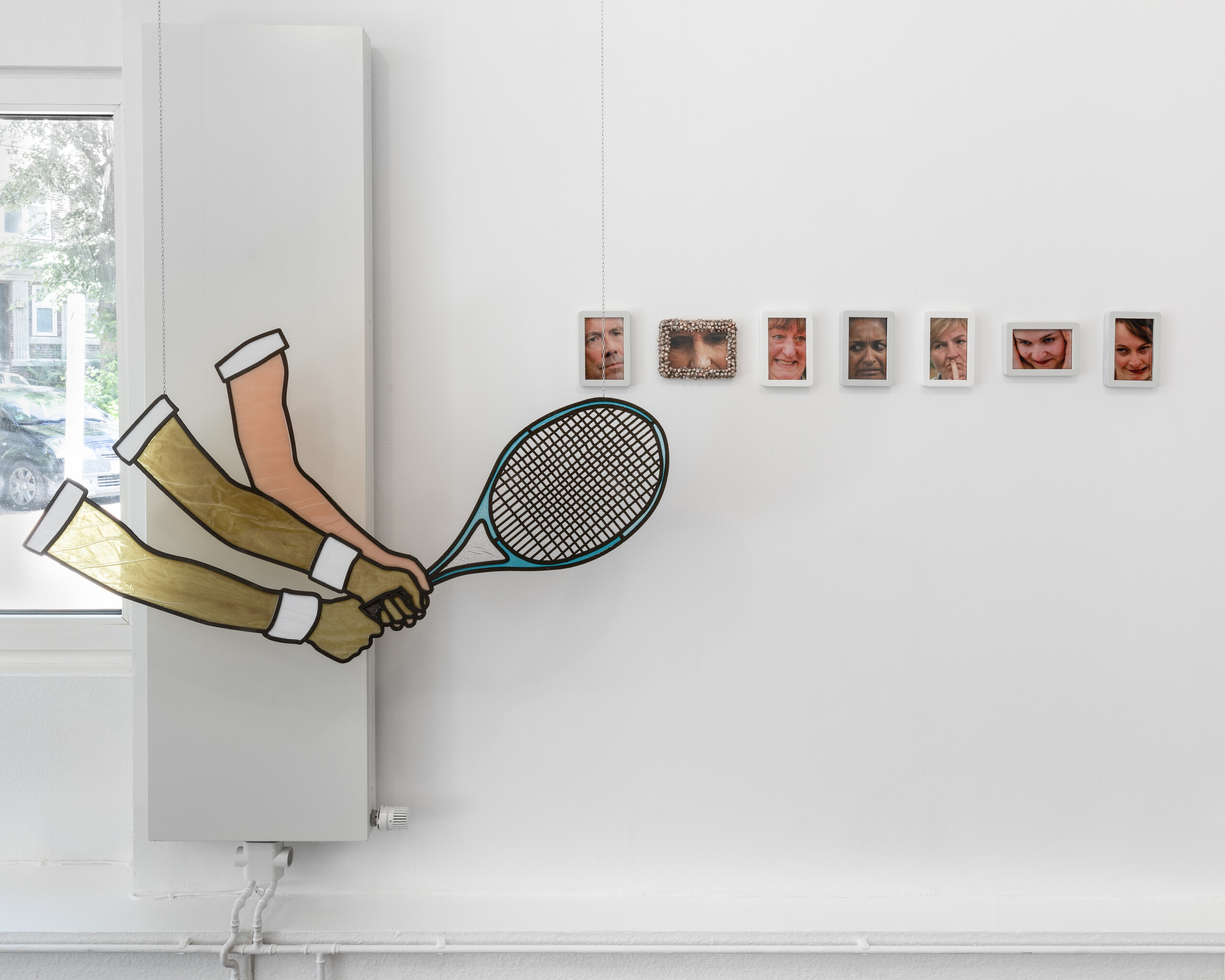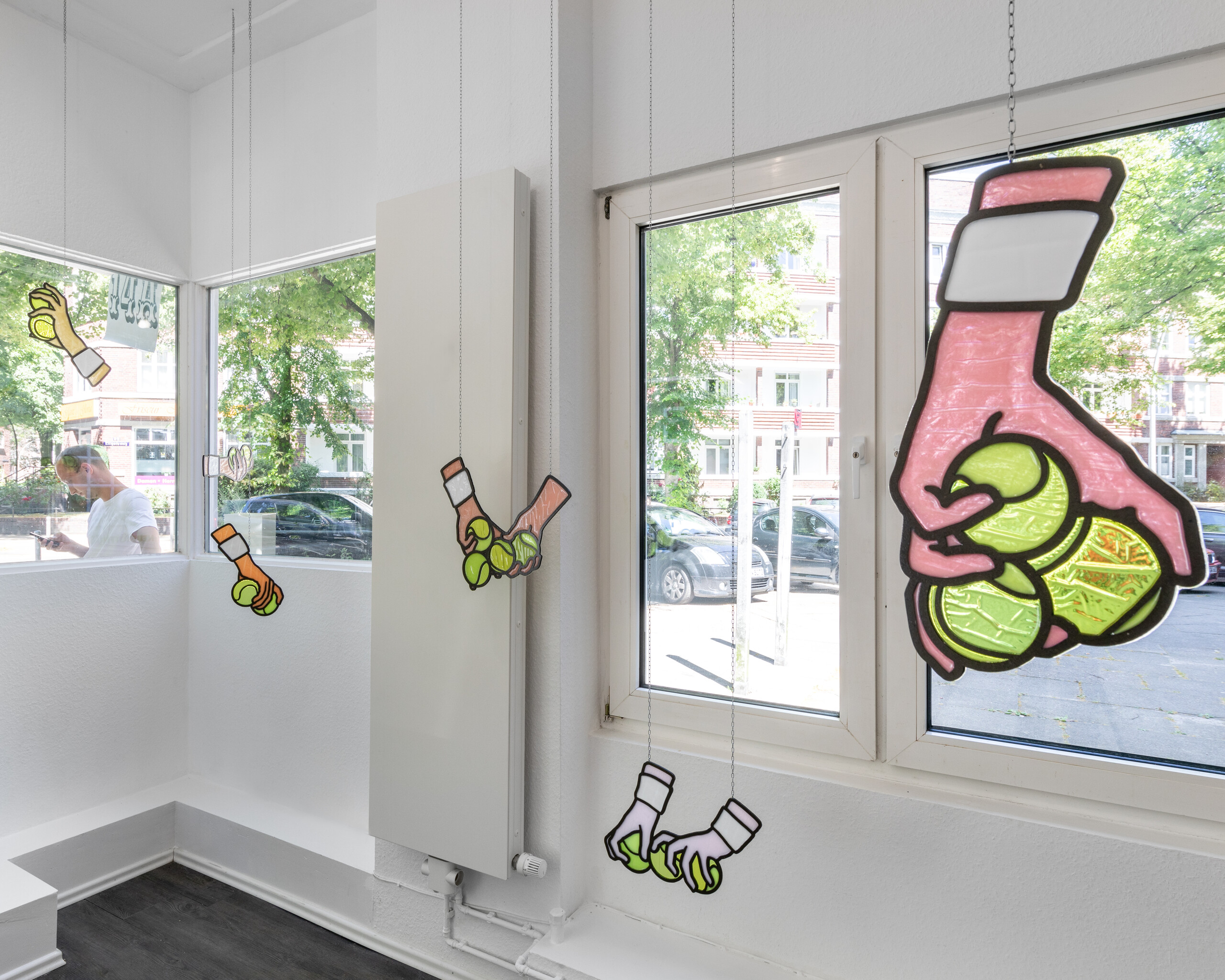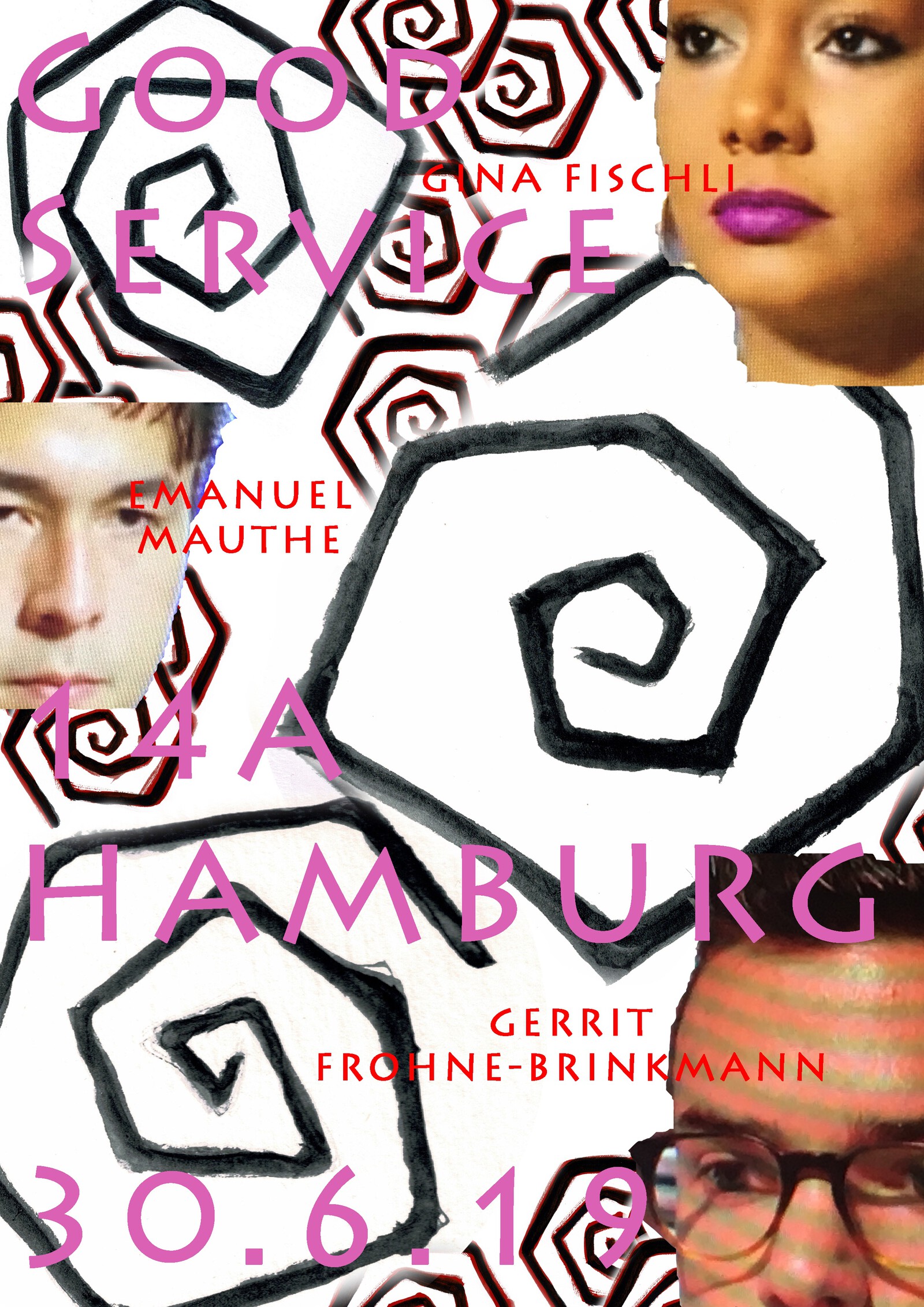14a is pleased to present Good Service, a group exhibition with works by Gerrit Frohne-Brinkmann & Emanuel Mauthe and Gina Fischli.
Photography has always been an inherent part of London-based artist Gina Fischli’s (*1989 Zurich, Switzerland) practice. Only recently, has Fischli swapped her body camera for her iPhone camera as it allows her to observe and capture her surrounding undisturbed and unwatched. Both large format works, Good Service and Life’s A Tale Told By An Idiot, depict a view through a sheet of glass, which again is captured on the phone. It is, so to speak, double-glazed. The screen becomes our lens through which life is experienced. Constantly trying to hold on to brief moments in time via our phone references our daily consumption of images that get lost in the depths of our storage. This ephemeral character of Fischli’s photographs, is further highlighted in that they are directly applied to the wall and thus are difficult to remove without destroying them – they are violative and destructible at the same time just like our memories. Overall, the photographs become physical keepsakes in the vast ocean of snapshots. Drawing on existing material, Der Jüngste Tag are screenshots portraying candidates of television cookery shows in the moment of their evaluation by a panel of judges. Fischli has envisioned them to be place holders for the artists included in Good Service, but also generally speaking, for our generation that persistently, anxiously and nervously awaits to be judged on abilities and performance. Fischli’s glitter drawings, on the other hand, are part of a larger series of artist-favoured household, design and everyday objects that are drawn on a board, then coloured in with glitter and glue. They’re aura resembles that of roman icon paintings as they act as a nuanced signifier to a particular milieu, as symbols of luxury, class and kitsch, while at the same time challenging the viewers understanding of taste. This humorous yet libidinous character, which permeates Fischli’s work, can also be found in Gerrit Frohne-Brinkmann’s (*1990 Friesoythe, Germany) and Emanuel Mauthe’s collaborative works. At first glance, Tennis Arms and Ball Boys remind of lead glass windows and glass works famously known from valuable ornate gothic church windows that are steeped in history and art nouveau stained glass through to 20th century hobby kitsch. On closer inspection the materiality, technique and imagery seems to be out of date. Moving along the border between High & Low Art these works reference the trail from exclusive craftsmanship to mass production. Frohne-Brinkmann’s and Mauthe’s collaboration – both have individual artistic careers – explicitly addresses the process of working together, which is reflected in the works motifs.
Intertwined Tennis Arms can be read metaphorically as they highlight concomitance and team play. Social interaction becomes a pivotal moment in the works as each step relies on its counterpart – tennis racket / tennis ball, tennis player / ball boy. A distinctive synergy, which sways between tenderness and encroachment permeates Frohne-Brinkmann’s and Mauthe’s work on multiple levels. Throughout history, movies have given an overarching presence to the tennis court, often projecting a field of tension on to it that prompts flutters of ardour. However, the moment of tension, attraction or invasion is actually rather short, surreptitious and ephemeral, which is exactly what the works express. They capture this one fleeting moment, manifest it and leave it open to the viewer to discover it’s story. Within this narrative Ball Boys take in a stand-by position in which they are ready to offer unlimited good service regardless of the situation.
Gerrit Frohne-Brinkmann (*1990, Frisoythe, Germany. Lives and works in Hamburg). Selected solo exhibitions include What I claim is new, Galerie Juergen Becker, Hamburg, 2016; WE HAVE A T-REX, Artothek, Cologne, 2017; Corpse Flowers, Nassauischer Kunstverein, 2017; A New Low, Stadtmuseum Oldenburg, 2017; Cave Art Comeback, Kunsthalle Bremerhaven, 2018; Schmutzige Papageien, Galerie Noah Klink, Berlin 2018. Selected Group exhibitions include Digesting Notes, Skulpturinstitut, Vienna, 2017 and Everything has been done 2, Forde, Geneva P-A-N-T-S-D-O-W- N, Dortmunder Kunstverein, Dortmund, 2018. In Fall 2019, Frohne-Brinkmann will have a solo exhibition at Kunstpalais Erlangen.
Emanuel Mauthe: (*1984, Vienna, Austria. Lives and works in Vienna). Selected exhibitions include The Vacancy, Galerie Crone, Berlin, 2015; The Sump Show, Strange Teaching, New York, 2015; Coperto, Skulpturinstitut, Vienna, 2016; Golem schläft, stage play, Prinzregententheater München, 2017; Im Keller, Elektro Gönner, Vienna, 2017.
Gina Fischli: (*1989, Zurich, Switzerland. Lives and works in London). Selected one and two- person exhibitions include London Today, Forde, Geneva, 2016; Christie (with Issy Wood), ZAK’s, New York, 2017; Ties and Fries, Her Gallery, London, 2018; Interior Living, SUNDY, London, 2018. Selected Group exhibitions include All about my mother, Royal Academy of Arts, London, 2016; Way Out, Jenny’s, London, 2018; Habits of Modern Dwelling (curated by Jo Harrison), Lungley Gallery, London, 2019. In 2019, Fischli will show at Ginerva Gambino, Cologne; at the Swiss Institute, New York and at Haywood Gallery, London.
